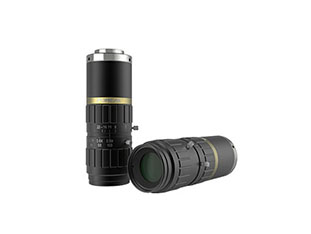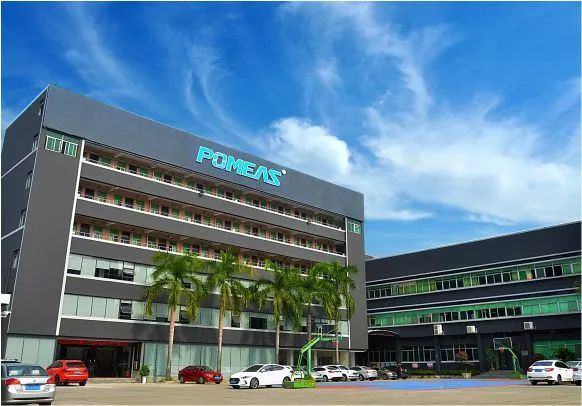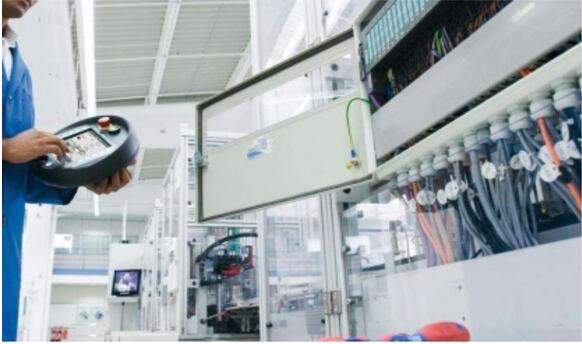As a core component in machine vision inspection, the choice of zoom range directly affects the inspection accuracy, efficiency and system compatibility. To determine the appropriate zoom range, we need to consider the characteristics of the inspection object, the matching of the camera parameters and the performance of the lens itself in three dimensions.


A、Based on the size range of the test object as the core basis
The difference in the size of the object is the primary factor in determining the zoom range, which needs to cover the full range of imaging needs from the “smallest inspection size” to the “largest inspection size”:
-
Wide zoom range (e.g. 0.5x-2x): adapted to scenes with large size differences
When inspecting objects that span a wide range of sizes (e.g., from a few millimeters to several tens of millimeters), a wide zoom range is needed to achieve a balance between high magnification of small objects and low magnification of large objects.
For example, if you need to inspect both a tiny 2mm diameter part and a 30mm diameter assembly, a low magnification (e.g. 0.5x) ensures that the 30mm assembly is fully visible in the field of view, while a high magnification (e.g. 4x) enlarges the details (e.g. scratches on the surface, apertures) of the 2mm part to a pixel scale sufficiently clear to satisfy the need for high-precision measurements.
-
Narrow zoom range: prioritizing accuracy for dimensionally stable scenes
Narrow zoom ranges (e.g. 1x-2x) are more advantageous if the object size fluctuation is very small (e.g. <5% for the same batch of parts).
The reason is that the optical properties of the lens (e.g. aberration, resolution, telecentricity) are more stable in a narrow zoom range - the lens group moves less during the zoom process, and the aberration control is more precise, which reduces the inspection error caused by the zoom, and is especially suitable for high-precision measurements (e.g. dimensional tolerances of ±0.001mm).
B、Deep matching to camera parameters to avoid “wasted pixels” or “missing information”.
The zoom range needs to be tightly adapted to the camera's resolution and target surface dimensions, centered on ensuring that the imaging “does not exceed the target surface and does not lack pixels.”
-
Avoid exceeding the camera's target surface
When the magnification is too large, the object may be imaged beyond the range of the camera's sensor (target surface), resulting in truncated edges of the part that cannot be detected completely.
Calculation formula reference: Maximum allowable magnification ≤ Camera target surface size (e.g. 1/2.3-inch target surface approx. 6.4mm x 4.8mm) ÷ Maximum size of inspection object.
-
Avoiding under-pixelation
When the magnification is too small, the object occupies a small number of pixels in the image, and the details (e.g., tiny defects, textures) cannot be distinguished, resulting in a decrease in detection accuracy.
Calculation formula for reference: Minimum required magnification ≥ (number of camera lateral pixels × individual pixel size) ÷ Minimum feature size of the detected object (e.g., a 0.1mm scratch needs to be covered by at least 10 pixels to ensure clear recognition).
C、Combined with telecentric lens characteristics, the effective zoom range is limited.
The core advantage of telecentric zoom lenses is “object-side telecentricity” (which eliminates perspective errors), but this characteristic is only stabilized over a specific zoom range.
-
If the zoom range is too wide, “telecentricity degradation” (e.g., the main light ray deviates from the parallel optical axis) may occur at some magnifications, resulting in increased measurement error. It is therefore necessary to refer to the lens manual to ensure that the selected zoom range falls entirely within its “Telecentric Effective Interval”.


Since POMEAS was founded in 2010, we have always taken “high precision and high efficiency” as the core, relying on 15 years of experience in vision component R&D, we can provide customized telecentric zoom lens selection according to the size of your inspection object, camera parameters and accuracy requirements. Contact us to make every zoom precisely fit your inspection scene.
Product recommendation
TECHNICAL SOLUTION
MORE+You may also be interested in the following information
FREE CONSULTING SERVICE
Let’s help you to find the right solution for your project!


 ASK POMEAS
ASK POMEAS  PRICE INQUIRY
PRICE INQUIRY  REQUEST DEMO/TEST
REQUEST DEMO/TEST  FREE TRIAL UNIT
FREE TRIAL UNIT  ACCURATE SELECTION
ACCURATE SELECTION  ADDRESS
ADDRESS Tel:+ 86-0769-2266 0867
Tel:+ 86-0769-2266 0867 Fax:+ 86-0769-2266 0867
Fax:+ 86-0769-2266 0867 E-mail:marketing@pomeas.com
E-mail:marketing@pomeas.com
